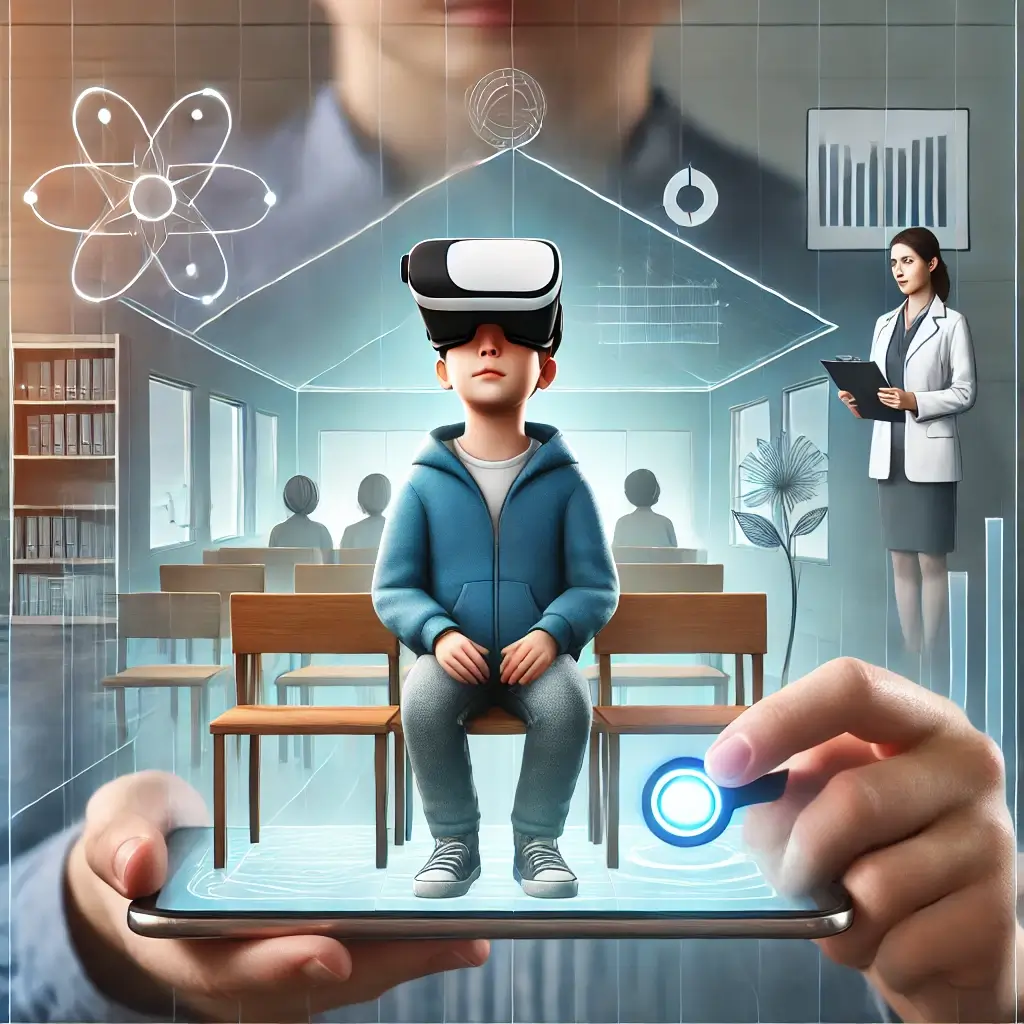Understanding the Impact of Childhood Anxiety
Childhood anxiety disorders are a growing concern in mental health, impacting millions of children worldwide. The consequences of untreated anxiety in children can extend far beyond immediate distress, influencing academic performance, social development, and overall quality of life. While traditional therapies such as Cognitive Behavioral Therapy (CBT) have been cornerstones in managing these disorders, the evolving needs of children and advances in technology call for innovative approaches. Virtual Reality (VR) therapy emerges as a promising solution, offering a unique blend of immersion, customization, and engagement.
The Power of Virtual Reality in Therapy
VR therapy uses immersive simulations to create controlled therapeutic environments, enabling children to confront their anxieties gradually and effectively. Unlike real-world exposure therapy, which can be daunting and difficult to manage logistically, VR allows clinicians to design scenarios that are precisely calibrated to each child’s needs. For example, a child with social anxiety can practice public speaking in a virtual auditorium or engage in simulated social interactions, building confidence in a safe, supportive setting.
Expert Perspective on VR Therapy
Dr. James Chen, a leading clinical psychologist, explains, “VR therapy is not just a tool; it’s a transformative way to engage young patients who might otherwise struggle with traditional forms of treatment. Its interactive nature appeals to children, fostering participation and adherence.” With the growing accessibility of VR technology, its integration into pediatric mental health care could bridge significant gaps in treatment availability and effectiveness.
Research Findings and Applications
Recent studies highlight the profound impact of VR therapy on pediatric anxiety treatment. A pivotal 2024 study in the Journal of Digital Psychiatry found that children undergoing VR-based therapy experienced a 65% reduction in anxiety symptoms, a significant improvement compared to the 45% reduction seen with conventional therapies. Engagement and completion rates were also markedly higher, with VR therapy boasting an 85% engagement rate and a 75% completion rate, both of which are critical for long-term success.
Versatility in Anxiety Treatment
Additional studies have demonstrated the versatility of VR therapy in addressing various anxiety disorders, including: Social Anxiety: Simulations of parties, classrooms, or public speaking events help children practice and develop coping mechanisms in a risk-free environment. Separation Anxiety: Gradual exposure to scenarios of being apart from caregivers, with real-time emotional support. Performance Anxiety: Interactive simulations for sports events, musical performances, or exams. Phobias: Specific phobias such as fear of heights, animals, or darkness can be addressed with tailored virtual scenarios.
Breakthrough Research Results
One groundbreaking study involving 2,000 children revealed that VR therapy not only accelerated symptom improvement by 50% but also produced 35% better long-term outcomes compared to traditional methods. These findings underscore the potential of VR to reshape the landscape of pediatric mental health care.
Implementation and Safety Guidelines
The adoption of VR therapy in clinical settings requires structured implementation and robust safety measures. Dr. Rachel Martinez, a pediatric psychiatrist, emphasizes the importance of a phased approach: Initial Assessment, Therapeutic Design, and Monitoring and Adjustment protocols ensure safe and effective treatment delivery.
Safety Protocols and Equipment
Safety is paramount in VR therapy. Proper equipment and safety monitoring systems are essential. Sessions should be conducted in a safe, supervised environment, with duration limits to prevent physical or emotional fatigue. Clinicians are trained to recognize warning signs such as motion sickness, excessive anxiety, or avoidance behaviors, adjusting the therapy accordingly.
Future Impact and Potential
Virtual Reality therapy represents a revolutionary step forward in treating pediatric anxiety disorders. By blending cutting-edge technology with evidence-based therapeutic principles, VR therapy offers an engaging, effective, and accessible solution for children struggling with anxiety. The ability to simulate real-world challenges in a controlled setting not only empowers children to confront their fears but also provides clinicians with unparalleled flexibility and precision in treatment design.
Expert Conclusion
Dr. Martinez aptly summarizes the impact of VR therapy: “We are witnessing a paradigm shift in mental health care. VR therapy isn’t just enhancing treatment—it’s reimagining what’s possible for children with anxiety.” As research continues to validate its benefits and as technology becomes more widespread, VR therapy is poised to become a cornerstone in pediatric mental health interventions.
References
Journal of Digital Psychiatry (2024). “Efficacy of Virtual Reality Therapy in Pediatric Anxiety Disorders.”
Pediatric VR Therapy Studies (2024).
Clinical Psychology Review (2024). “Comparative Outcomes of Traditional and VR-Enhanced Therapy.”
Digital Mental Health Research (2024). “Technological Interventions in Child Psychiatry.”
Child Anxiety Treatment Outcomes (2024).

Dominic E. is a passionate filmmaker navigating the exciting intersection of art and science. By day, he delves into the complexities of the human body as a full-time medical writer, meticulously translating intricate medical concepts into accessible and engaging narratives. By night, he explores the boundless realm of cinematic storytelling, crafting narratives that evoke emotion and challenge perspectives. Film Student and Full-time Medical Writer for ContentVendor.com



